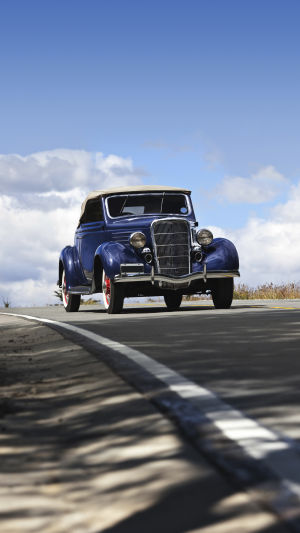In the process of remarkable advancements in automotive technology, manufacturers often choose to break the cycle and seek inspiration from the past.
This resurgence of retro cars has defined the legacy of automotive brands, drawing in loyal enthusiasts.
The nostalgic design themes set these vehicles apart from the most popular cars of recent years, and in this article, we'll showcase the best retro cars.
What exactly defines a retro car? Whether you love or loathe it, retro style has been a recurring theme throughout automotive design history.
Imaginations for new cars are inevitably influenced by the past, but most new models emerge to reflect modern aesthetics or even establish new visual paradigms to help define the future.
At times, automotive designers deliberately and prominently revisit history, resurrecting classic design themes. The fusion of modern technology with classic design themes represents an irreplicable design philosophy that various cars have revisited over the years.
1. Volkswagen Beetle
To address the instability of airflow at high speeds for boat-shaped and fish-shaped cars, engineers conceived various solutions. Ultimately, they discovered that tilting the entire body forward and designing the rear of the car to be flat like a blade effectively counteracted lift.
It proved that wedge-shaped cars significantly improved stability, making it the deservedly ideal car body shape at that time. Today, the exterior designs of most cars trace their lineage back to wedge-shaped automobiles.
2. Cadillac Eldorado Ninth Generation (1971 to 1978)
The 1971 Eldorado underwent a substantial redesign, increasing in length by 2 inches and wheelbase by 6 inches, equipped with standard mudguard skirts, all contributing to a much weightier appearance than the previous generation. The 8.2-liter V8 engine remained the exclusive powerplant for the Eldorado.
3. MINI
MINI stands as a classic example, reviving a beloved model through retro styling. Starting in 1959, the original Mini went through 7 generations, manufactured by BMC, British Leyland, and Rover until production ceased in 2000. Then came BMW, reviving the lineage in 2001 with a modernized twist.
This "new" Mini reinterpreted classic design themes both inside and out, but it was larger and more modern in appearance. Today, MINI isn't just a car; it's an automotive brand. These retro design themes have in recent years extended to real estate, coupes, roadsters, and SUVs, often frustrating purists.
4. Land Rover Defender
The design of the Land Rover Defender can be seen more as traditional than retro. Land Rover Defenders, alongside preceding Land Rover models, have been popular in rural areas of the UK for decades.
From the late 1940s Land Rover series to the 'Defender' named in 1991, continuing until 2016 with the '90s and '110,' this series hasn't seen significant changes.
The design of the Defender is iconic, instantly recognizable from almost any angle, whether covered in its usual thick layer of mud or not. The new Land Rover Defender undoubtedly continues this theme, with elements deeply rooted in its past, yet it's unquestionably the most dramatically redesigned Land Rover to date.
The Defender has evolved into a genuinely versatile vehicle. In this sense, it has inherited the inherent toughness and capability of its predecessors while now possessing a quality and comfort gloss. It breaks away in some aspects from the past, enabling it to effectively compete with both pure off-roaders and family SUVs.
In the world of automobiles, the allure of retro design persists, weaving threads of nostalgia into modern innovation. From the timeless Beetle to the reimagined Defender, these vehicles bridge the past and present, showcasing the enduring appeal of classic aesthetics in a rapidly evolving automotive landscape. As we celebrate the charm of retro cars, they remind us that while technology propels us forward, a nod to history often fuels our imagination for the future.





